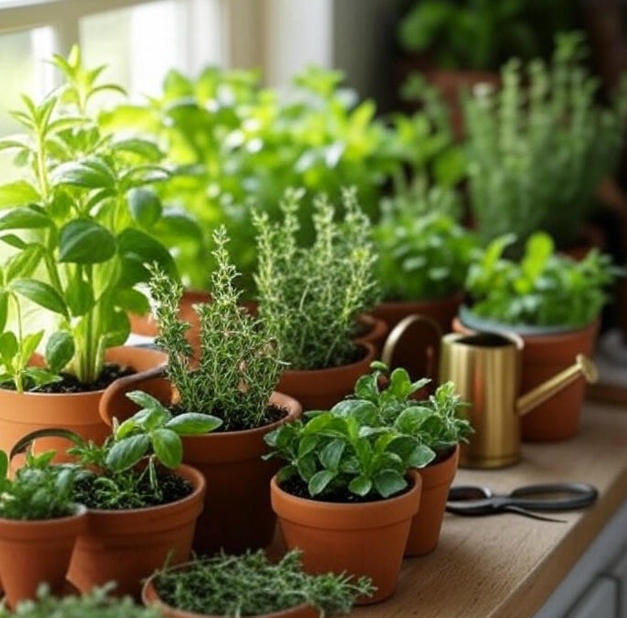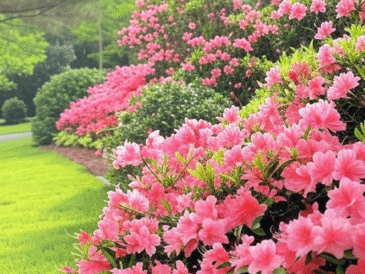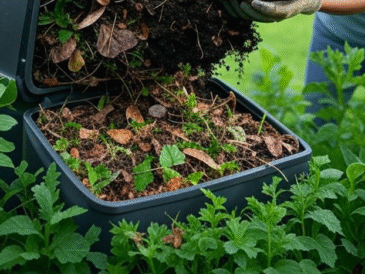Growing your own herbs indoors is a rewarding and practical way to bring fresh flavors into your kitchen year-round. Whether you have a spacious garden or just a small apartment, indoor herb gardening is accessible to everyone. In this beginner-friendly guide, we’ll cover everything you need to know to successfully grow herbs inside your home — from choosing the right plants to caring for them properly.
Why Grow Herbs Indoors?
Fresh herbs can elevate any meal, adding vibrant flavors and nutritional benefits. Growing herbs indoors gives you:
- Convenience: Fresh herbs at your fingertips anytime.
- Cost Savings: No need to buy pricey fresh herbs repeatedly.
- Air Quality Benefits: Some herbs help purify indoor air.
- Sustainability: Reduces plastic waste from store-bought herb packaging.
- Therapeutic Experience: Gardening indoors is calming and connects you to nature.
Best Herbs for Indoor Gardening
Not all herbs thrive indoors, so it’s best to start with varieties that are easy to grow inside and have practical uses. Some beginner-friendly options include:
- Basil: Great for cooking and grows well in bright light.
- Mint: Hardy and fragrant, perfect for teas and desserts.
- Parsley: Versatile and nutrient-rich, prefers moderate sunlight.
- Chives: Mild onion flavor, requires minimal maintenance.
- Thyme: Drought-tolerant and flavorful in many dishes.
- Cilantro: Needs bright light and cooler temperatures.
Starting with these herbs increases your chance of success and keeps things manageable.
Choosing the Right Containers and Soil
Containers
Choose pots with drainage holes to prevent waterlogging, which can cause root rot. You can use:
- Traditional ceramic or terracotta pots
- Recycled containers (just make sure to add drainage)
- Specialized indoor herb planters or window boxes
Soil
Use a high-quality potting mix designed for indoor plants. Avoid garden soil as it can contain pests or diseases. A mix that retains moisture but drains well is ideal.
Location and Light Requirements
Herbs need sufficient light to grow healthy and strong.
- Sunny Windowsill: Most herbs require at least 6 hours of direct or indirect sunlight daily. South- or west-facing windows work best.
- Supplemental Lighting: If natural light is limited, consider using grow lights. LED grow lights are energy-efficient and provide the necessary spectrum for photosynthesis.
Planting Your Herbs
You can start herbs from seeds or buy young plants from a nursery.
Starting from Seeds
- Follow packet instructions for depth and spacing.
- Keep soil moist but not soaked.
- Use a clear cover or plastic wrap to retain humidity until seedlings sprout.
Starting from Seedlings
- Gently loosen roots before planting in your pot.
- Water immediately after planting.
Watering Tips
- Check soil moisture regularly; herbs like basil and cilantro prefer moist (not soggy) soil.
- Water when the top inch of soil feels dry.
- Avoid overwatering as it leads to root rot.
- Use room temperature water to prevent shock.
Feeding Your Herbs
Use a balanced, water-soluble fertilizer every 4-6 weeks during the growing season. Organic options like fish emulsion or seaweed extract are gentle and effective.
Pruning and Harvesting
Regular pruning encourages bushier growth and prevents legginess.
- Pinch off flower buds to focus energy on leaves.
- Harvest leaves as needed, but avoid taking more than one-third of the plant at a time.
- Use sharp scissors to cut stems cleanly.
Common Problems and How to Fix Them
- Yellowing Leaves: Usually a sign of overwatering or poor drainage.
- Leggy Growth: Insufficient light—move herbs to a brighter spot or add grow lights.
- Pests: Occasionally, spider mites or aphids may appear. Use insecticidal soap or wipe leaves with soapy water.
Tips for Success
- Rotate pots regularly for even sunlight exposure.
- Keep herbs away from drafts and heating vents.
- Maintain indoor temperatures between 65°F to 75°F (18°C to 24°C).
- Use clean tools to prevent disease spread.
Final Thoughts
Growing herbs indoors is an enjoyable way to add freshness and flavor to your cooking while connecting with nature. With just a little care and attention, your indoor herb garden can thrive all year long, even in small spaces.
Start with easy herbs like basil or mint, provide plenty of light, and watch your green friends flourish. Soon, you’ll have fresh herbs ready to enhance your meals and your wellbeing every day.




